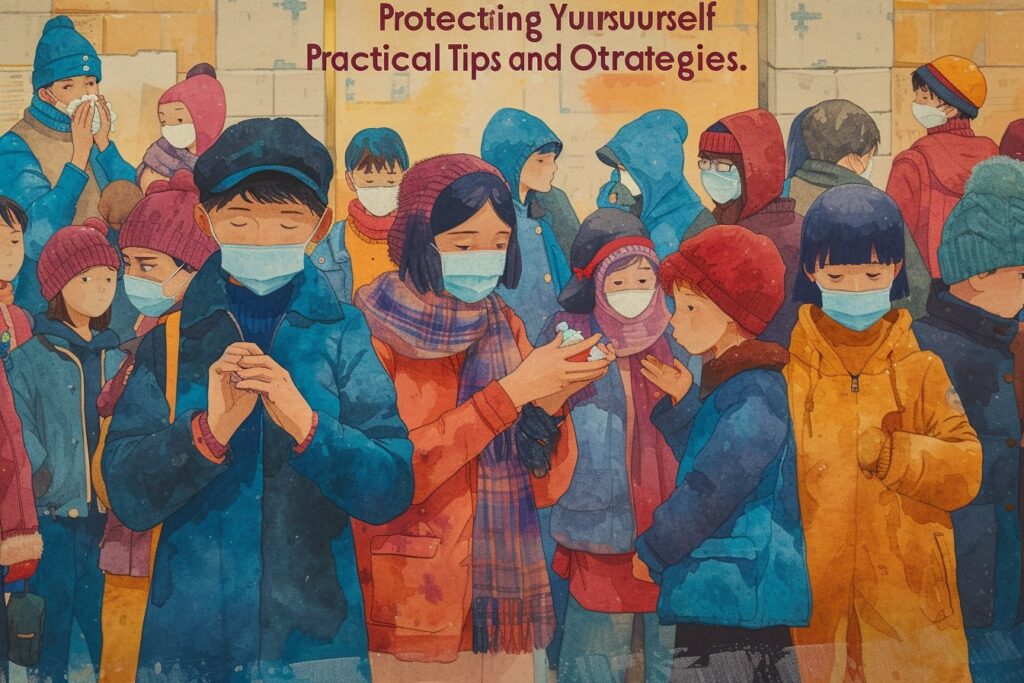The Basics of Influenza Transmission
Influenza, commonly known as the flu, is caused by an RNA virus belonging to the Orthomyxoviridae family. There are three types of influenza viruses, with type A being particularly notorious for its epidemic potential – such as the 2009 H1N1 influenza pandemic. These viruses can infect both animals and humans and spread rapidly through airborne transmission and contact transmission.
Airborne transmission happens when an infected person speaks or coughs, releasing droplets containing the virus into the air. If a nearby individual inhales these droplets, they can become infected. On the other hand, contact transmission occurs when someone touches an infected person or a contaminated surface and then touches their face, especially around the mouth, nose, or eyes.
High-Risk Populations
It’s important to note that certain individuals, such as young children, the elderly, and those with pre-existing health problems, are more likely to develop severe complications from the flu. The incubation phase of influenza usually lasts between one to four days and is considered highly contagious during this period. To protect against the flu, adopting rigorous preventive measures is crucial.
Effective Preventive Measures Against Influenza
Here are some practical tips to reduce the risk of contracting and spreading the flu:
- Get vaccinated annually: Receiving the flu vaccine every year is one of the most effective ways to protect yourself, as the virus evolves over time.
- Wash your hands thoroughly: Scrub your hands with soap and water for at least 20 seconds, or use an alcohol-based hand sanitizer when washing is not possible.
- Avoid close contact: Keep a reasonable distance from people you know are ill, particularly if they exhibit flu symptoms.
- Avoid touching your face: Be mindful of not touching areas like your mouth, nose, and eyes, as this can introduce the virus into your body.
- Practice respiratory etiquette: Cover your mouth and nose with a tissue or bent elbow when coughing or sneezing, and dispose of tissues properly.
- Clean surfaces frequently: Regularly disinfect commonly-touched surfaces such as doorknobs, switches, and phones using household cleaning products.
- Stay home if you’re sick: If you have flu symptoms, remain at home to prevent spreading the virus to others and seek advice from a healthcare professional.
Maintaining Personal Hygiene: Hand Washing Techniques
To prevent the spread of influenza, effective hand hygiene is essential. Here are some helpful strategies for proper handwashing:
- Lather thoroughly with soap, reaching all areas of the hands including between fingers and under nails.
- Rinse well with clean water.
- Dry hands with a clean towel or air dryer, where available.
- If possible, avoid touching anything with your newly cleaned hands to minimize recontamination.
Tips for Using Hand Sanitizer
When unable to wash your hands with soap and water, an alcohol-based hand sanitizer is a useful alternative. Consider these tips to maximize its effectiveness:
- Apply sufficient sanitizer to cover all areas of your hands.
- Rub your hands together, ensuring that the product reaches every surface. Pay attention to fingertips and nails,
- Avoid touching anything until your hands are completely dry – this ensures the sanitizer has had time to kill any remaining viruses.
In conclusion, protecting yourself and others from influenza requires understanding transmission routes as well as adopting effective preventive measures. By following the practical tips outlined in this article, you can significantly reduce the risk of contracting the flu while also contributing to a collective effort to prevent its spread.

